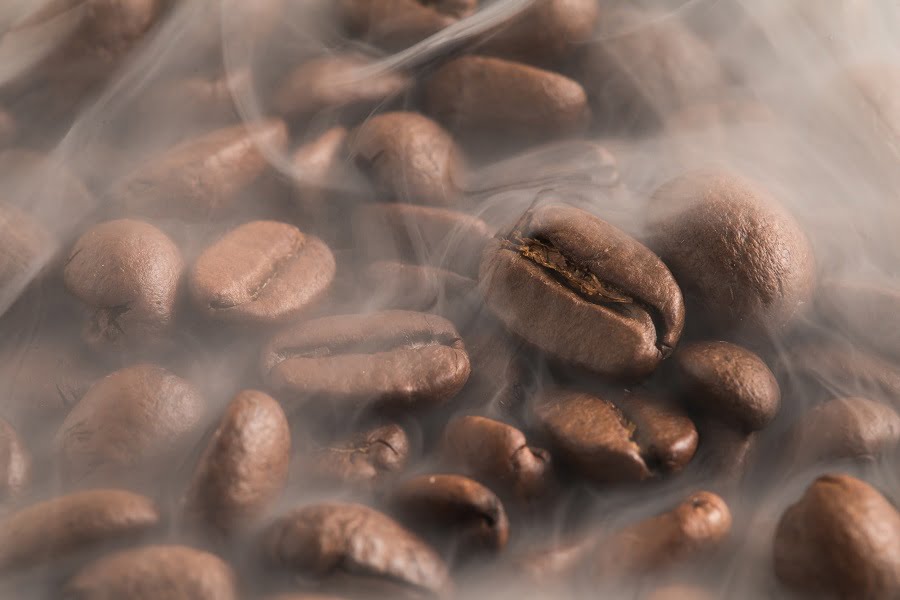How would you describe coffee to a person who has never tasted before? That’s the first step to learning how to describe coffee like a professional barista.
Delicious. Invigorating. Smooth. Bitter. Can’t-live-without-it-tastes-so-good. Those are the words that come to mind when describing what you feel when you drink coffee, but they are not the descriptors a pro would use. Indeed, most of us can’t start a day with a cup of good ole Joe, but can we describe it?
Actually, it’s easy as 1-2-3 if you know the right words. You can describe any coffee by:
- Smelling it.
- Tasting it.
- Feeling it.
Let’s learn how to do all three.
At the barista level, coffee is usually described by its:
- Roast type – Blonde, light, medium-light, medium (city roast), full city roast, dark, and the darkest roast.
- Region of the beans – Columbian, Costa Rican, Ethiopian, Guatemala, Jamaican Blue Mountain, Java, etc.
- Fragrance – the smell of the ground coffee (floral, spicy, fruity, winey, woody, nutty, or earthy)
- Aroma – how it smells after adding hot water (floral, spicy, fruity, winey, sweet, earthy, or nutty)
- Flavor – the taste of the coffee (fruity, sour, bitter, rich, balanced)
- Acidity – the acid content in the coffee often described as akin to the level of carbonization in soda (sharp, thin, flat, mild, or neutral)
- Body – the feeling of the coffee in your mouth, the texture (full, thick, balanced, delicate, buttery)
- Aftertaste – the taste and feel that remains after a sip of coffee.
Let’s dive into each of these and how you can pinpoint them in coffee.
Aroma and Fragrance

A coffee’s scent is often referred to as a bouquet or nose, and it’s distinct from the coffee fragrance. The latter refers to the smell of the vapors and gasses emitted during the coffee bean roasting and then taken up in the nose, entering the nasal membrane as aromatic compounds. The roasting process quickly causes coffee to lose its flavor.
The aromas may fall into one or more of these categories: nutty notes, caramel notes, cocoa-like notes (typical in darker roasts). So if you think that nutty fragrances are in the air, try seeking descriptors like almonds, hazelnuts, or peanuts, and so on.
Other descriptors of coffee aromas include flowery, nutty, smoky, herby. Meanwhile, taste descriptors include acidity, bitterness, sweetness, saltiness, and sourness (see the coffee flavor wheel below).
So the flavors you may experience and describe include toasted walnut, golden raisin, maple syrup, cocoa nib, currant, raspberry, dried fig, blackberry, hazelnut, malt, chocolate, caramel, etc.
Most of the time, coffee is finely caramelized and almost nutty.
Flavor

The coffee flavor wheel by the Specialty Coffee Association of America that you can see above can help you explain how each coffee tastes. Then, you can start formulating precisely how coffee tastes and how most coffee experts react to the various taste sensations of some of the world’s best coffee.
The combination of hot drinking water and coffee reveals flavor notes from sugar-browning reactions.
Nutty Flavor

Nutty is a scent that usually feels like fresh almonds.
Caramel Notes

Caramel is a flavor or scent similar to candy or syrup, such as caramelized sugars. Colombian and South American coffees are less acidic but contain a caramel sweetness and a nutty undertone that can not be beaten.
Cocoa and Chocolate Notes

A chocolate-like taste or fragrance. Owing to growth and processing techniques, most of these coffees are a little acidic like an apple, but still possess a sweetness that reminds you of soft chocolate or baked goods.
These coffees also have a touch of chocolate and prefer to stay in your mouth, making them perfect espresso combos choices.
Acidity

Acidity is determined both by the bean type and the roasting process. The darkest roasts have the least acidic flavor. Low acidity coffees feel smooth in your mouth and prefer to sleep. On the pH scale coffee is around 5 and it varies by roast type. So it’s more acidic than milk but less so than tomato.
Body

The body is the weight, thickness, and texture that coffee leaves in your mouth. A cup of espresso that looks as thick as a spoon is an excellent example of it. It can also be described as the feeling and taste of whole milk versus fat. Fat-free is more watery.
Coffee Bean

The coffee bean we roast is, in fact, a cherry-like seed of a coffee plant. The aroma of coffee beans is defined as enzymatic properties that remind you of the original condition of the coffee bean’s plant life—typically contained in coffee or coffee beans that have not been roasted enough.
Coffee beans undergo chemical and physical changes during roasting, which affect their color, size, taste, and smell.
Type of Coffee

Arabica and Robusta are the two dominant species. First, the bean of Arabica coffee grows at higher altitudes, while Robusta grows at lower altitudes.
Arabica beans contain less caffeine and 60% more fats and sugars than Robusta, so their tastes are more processed and bitter when roasted.
Robusta beans produce higher yields per plant, are more disease-resistant than Arabica, and contain around twice the caffeine content (probably preventing these pests and diseases).
Coffee Cupping

Many coffee sector professionals use the flavor wheel to define coffee cupping to test a specific coffee.
A successful coffee cupping session increases your knowledge of the subtleties and complexities of great coffee.
Besides coffee, for cupping, you will need:
- Hand grinder bowls (one per coffee per person)
- A couple of spoons (two per person)
- Electric kettle or fan kettle
- Waste and washing bowls (one per person)
- Cupping cards / SCAA flavor wheels
- If you can, use multiple burr grinders so that you can grind each coffee in each.